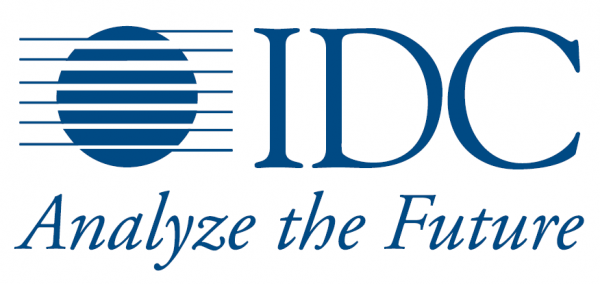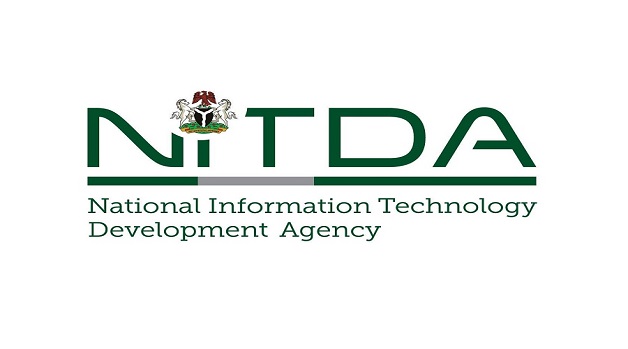E-Business
IoT Spending in MEA Set to Almost Double Over Coming Years – IDC

The Middle East and Africa (MEA) Internet of Things (IoT) market is set to grow 15% year on year in 2018, according to a recent update to the Worldwide Semiannual Internet of Things Spending Guide from International Data Corporation (IDC).
The global technology research and consulting firm’s latest forecast shows MEA spending IoT reaching $6.99 billion in 2018 and $12.62 billion by 2021 as organizations ramp up their investments in the hardware, software, services, and connectivity that enable IoT solutions.
“IoT adoption in the MEA region is expected to accelerate over the coming year as organizations from both the public and private sectors increasingly digitalize their businesses in a bid to automate their operations and ramp up productivity. And as organizations increasingly realize the added value that is provided by IoT, we can expect to see further development of innovative industry-specific solutions,” says Wale Babalola, a research analyst for telecommunications and IoT at IDC MEA.
Totaling $2.48 billion, IoT services is forecast to be the market’s largest technology category in 2018, with the majority of this total going towards ongoing services, IT services, and installation services. Hardware will be the second-largest technology category, followed by software and then connectivity.
The vast majority of hardware spend (85%) will go towards modules and sensors. Meanwhile, software will be market’s fastest growing category over the coming years, with spending in this area increasing at a compound annual growth rate (CAGR) of 21.3% over the 2016–2021 forecast period.
The industries that are expected to spend the most on IoT solutions in 2018 are manufacturing ($1.07 billion), transportation ($0.85 billion), cross industries ($0.76 billion), utilities ($0.75 billion), and consumer ($0.68 billion).
Manufacturers will direct most of their IoT spending over the coming 12 months towards solutions that support manufacturing operations and production asset management. Over in the transportation sector, fleet management and freight monitoring will account for up to 78% of IoT spending in 2018.
In the “cross industries” category, which represents use cases common to all industries, IoT spending will largely focus on smart buildings and connected vehicles. Smart grids for electricity will account for a little over 82% of total IoT spending in the utilities sector, while around 50% of consumer IoT spending will be driven by investments around smart buildings.
The IoT use cases that IDC expects to attract the largest investments in 2018 are smart grid electricity ($0.62 billion), manufacturing operations ($0.57 billion), freight monitoring ($0.52 billion), smart home ($0.41 billion), and remote health monitoring ($0.40 billion). IDC forecasts manufacturing operations to overtake smart grid electricity into top spot by 2021.
The use cases that will see the fastest spending growth over the 2016-2021 forecast period are insurance telematics (32.4% CAGR), smart buildings (31.4% CAGR), airport facility automation (30.5% CAGR), in-store contextualized marketing (28.8% CAGR), and electric vehicle charging (28.3% CAGR).
“The growing implementation of initiatives that leverage digital solutions will continue to fuel IoT adoption over the coming 12 months, particularly in Saudi Arabia and the UAE. As such, these two countries combined are expected to contribute $1.57 billion of the MEA region’s total IoT spending of $6.99 billion in 2018,” says Babalola.
E-Business
Microsoft Servers Hacked by Chinese Groups

Chinese “threat actors” have hacked Microsoft’s SharePoint document software servers and targeted the data of the businesses using it, the firm has said.

China state-backed Linen Typhoon and Violet Typhoon as well as China-based Storm-2603 were said to have “exploited vulnerabilities” in on-premises SharePoint servers, the kind used by firms, but not in its cloud-based service.
The US tech giant has released security updates in response and has advised all on-premises SharePoint server customers to install them.
“Investigations into other actors also using these exploits are still ongoing,” Microsoft said in a statement.
The firm said it had “high confidence” the hackers would continue to target systems which have not installed its security updates.
It added that it would update its website blog with more information as its investigation continues.
Microsoft said it had observed attacks in which hackers had sent a request to a SharePoint server “enabling the theft of the key material by threat actors”.
Charles Carmakal, chief technology officer at Mandiant Consulting firm, a division of Google Cloud, told reporter, it was “aware of several victims in several different sectors across a number of global geographies”.
Carmakal said it appeared that governments and businesses that use SharePoint on their sites were the primary target.
A number of adversaries who stole material encoded by cryptography were then able to regain ongoing access to the victims’ SharePoint data, he said.
“This was exploited in a very broad way, very opportunistically before a patch was made available. That’s why this is significant,” Carmakal said.
Carmakal said the “China-nexus actor” was deploying techniques similar to previous campaigns associated with Beijing.
Microsoft said Linen Typhoon had “focused on stealing intellectual property, primarily targeting organizations related to government, defence, strategic planning, and human rights” for 13 years.
It added that Violet Typhoon had been “dedicated to espionage”, primarily targeting former government and military staff, non-governmental organizations, think tanks, higher education, the media, the financial sector and the health sector in the US, Europe, and East Asia.
Meanwhile, Storm-2603 was “assessed with medium confidence to be a China-based threat actor”.
E-Business
NIMC Warns Nigerians of Fake NIN Website

National Identity Management Commission (NIMC) has issued a public warning that it is not associated with NINcard.com.

According to the commission, the website has been circulating online to offer services for Nigerians seeking National Identification Number (NIN) services.
NIMC, in a post on its official X account on Wednesday, said, “NINcard.com is not in anyway affiliated to NIMC. Stay vigilant!”
The warning was accompanied by screenshots of fake payment receipts and OTP request pages from the website, both of which were boldly stamped “FAKE” by NIMC to alert the public.
E-Business
NITDA, API Partner Against Harmful Online Content

National Information Technology Development Agency (NITDA), in partnership with the Advocacy for Policy and Innovation (API), has convened a one-day workshop in Abuja to advance dialogue on the draft Online Harm Protection (OHP) Bill to confront harmful online content.

The bill, a rights-based, locally rooted, and multi-stakeholder initiative, is aimed at addressing the challenges of the digital age.
The event, which held yesterday, brought together government officials, civil society, academics, digital platforms, and legal experts to shape a policy framework designed to combat online ills such as cyberbullying, disinformation, hate speech, digital exploitation, and gender-based violence, while safeguarding democratic freedoms and digital inclusion.
In his keynote remarks, Kashifu Inuwa, director general, NITDA urged a paradigm shift in the way society engages with digital technologies.
“For almost two decades, we have viewed digital technology through a consumer lens. But these technologies are not just products and services. They are transforming how we live, work, and interact. They shape our politics, our society, and our democracy,” he said.
Warning against unaccountable digital power in the hands of private corporations, the DG likened the digital journey to the tale of Alice in Wonderland, where initial fascination with innovation has given way to deeper concerns about privacy, autonomy, and manipulation by big tech platforms.
“We thought we were using Google, but now we realise Google is using us. Social media, once a tool of expression, has become a tool of surveillance and influence,” Inuwa noted.
He, therefore, emphasised the urgency of developing a democratic and accountable framework. He explained that following the 2021 Twitter ban, NITDA facilitated dialogue between the government and platform operators, leading to a Code of Practice that stressed Nigeria’s sovereignty and legal standards.
According to him, the same process birthed the multi-stakeholder steering committee and the OHP White Paper in December 2024, laying the foundation for the current legislative push.
Earlier in her opening remarks, Victoria Manya, co-founder, API, observed the moral and civic necessity of the bill.
Her words: “The internet did not break society, it merely revealed its unfiltered version. Every day, Nigerians are exposed to harassment, disinformation, exploitation, and even algorithmic violence. The OHP Bill is not a war on the Internet. It is a peace offering to its users, a social contract for a digital future that is safe, inclusive, and democratic.
“We cannot answer the question of algorithmic power with unchecked state control. We must answer it with shared, rights-based governance. This bill must not be written for the people, but with them.”

 Telecom3 days ago
Telecom3 days agoMTN Nigeria Rewards 1,500+ Winners with ₦290m in Mega Billion Promo

 E-Financial3 days ago
E-Financial3 days agoNaira Slides Again, Hits ₦1,532.34/$ Despite CBN’s Dollar Push

 E-Business3 days ago
E-Business3 days agoMicrosoft Server Hack Likely Solo Actor, Thousands at Risk

 E-Business3 days ago
E-Business3 days agoFlaw in Microsoft SharePoint Sparks Global Cybersecurity Concern

 Telecom3 days ago
Telecom3 days agoMTN, MTV Base Launch “Room of Safety” Series to Promote Online Child Safety

 E-Financial2 days ago
E-Financial2 days agoKuda Unveils New Wallet for Multiple Currencies

 E-Financial3 days ago
E-Financial3 days agoFidelity Bank to Empower 100 SMEs Across Nigeria with Digital Tools

 Telecom3 days ago
Telecom3 days agoMENXTT Tech NG Debuts USA-Spec Devices and Redefines IT Retail in Nigeria


























